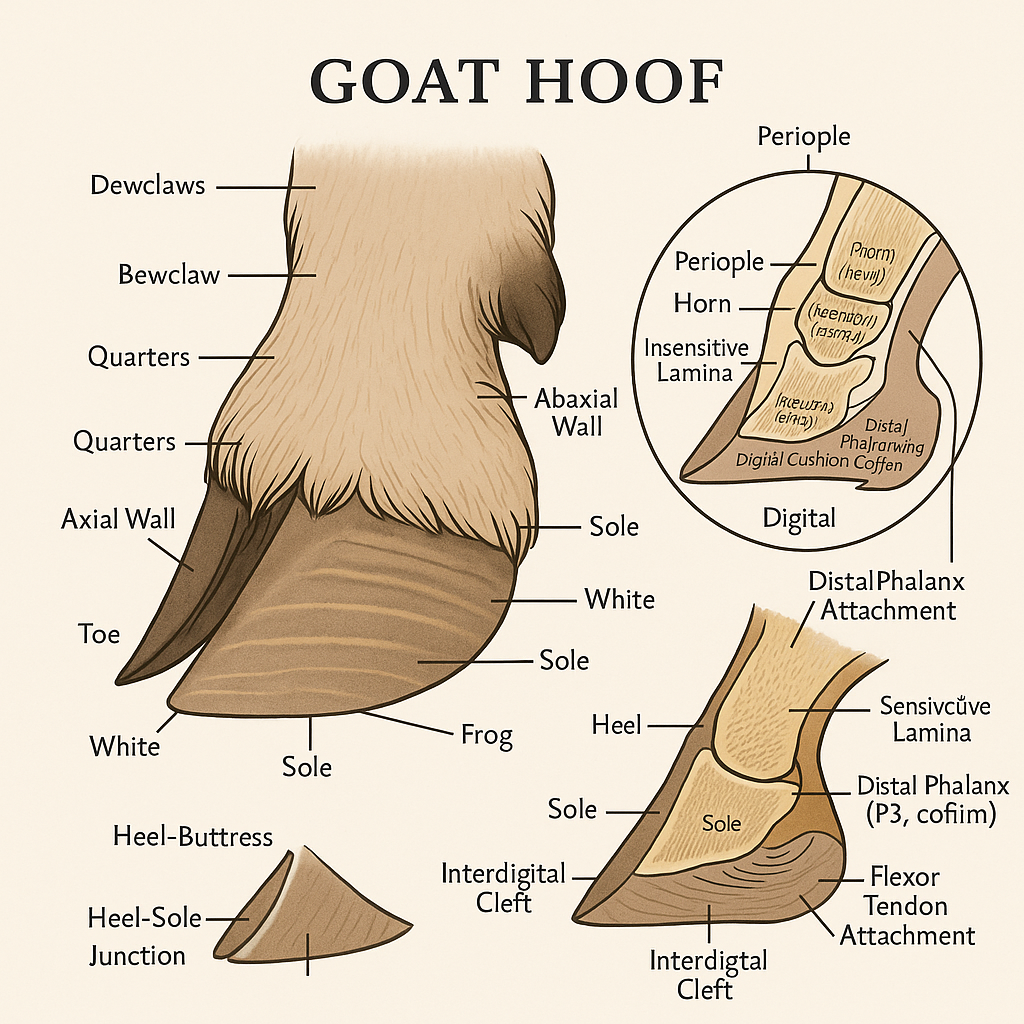Hoof Care & Grooming
Routine hoof trimming is a non-negotiable part of goat ownership. Overgrown hooves can lead to lameness, infection, and long-term joint problems.
How Often to Trim
Most goats need their hooves trimmed every 4-8 weeks. The exact frequency depends on:
- Terrain: Goats on rocky, abrasive ground will naturally wear down their hooves more than goats on soft pasture.
- Genetics: Some goats just grow hooves faster than others.
- Diet: A rich diet can sometimes lead to faster hoof growth.
The Trimming Process: A Step-by-Step Guide

Your Toolkit:
- Hoof Trimmers/Shears: Sharp, clean, and designed for goats or sheep.
- Hoof Pick or Brush: To clean out mud and debris.
- Gloves: For better grip and hygiene.
- Blood Stop Powder: In case you accidentally trim too close to the quick.
- 1. Secure the Goat: The easiest way is on a milk stand or grooming stand. You can also have a helper hold the goat securely against a wall.
- 2. Clean the Hoof: Use a hoof pick or stiff brush to remove all dirt, mud, and manure. You need to see what you are doing.
- 3. Trim the Hoof Wall: The outer wall of the hoof grows fastest. Carefully trim the overgrown wall down until it is level with the soft sole of the hoof. Make small, conservative cuts.
- 4. Shape the Hoof: The goal is a flat, level bottom surface for the goat to walk on. Pare away any flaps or pockets on the sole, but be careful not to remove too much.
- 5. Check for Problems: As you trim, look for signs of hoof rot (a foul smell, black tissue), scald (redness between the toes), or abscesses.
Hoof Rot vs. Hoof Scald
These two common hoof ailments are often confused, but they have different causes and treatments. Both are more common in wet, muddy conditions.
Hoof Scald
This is a milder infection of the skin between the toes. It will look red, raw, and inflamed, and the goat will likely be limping. It is caused by bacteria that thrive in wet pastures.
Hoof Rot
This is a more severe, anaerobic bacterial infection that attacks the hoof itself, causing the sole to separate from the hoof wall. It has a distinctly foul odor and you may see black or gray, rotting tissue. It is highly contagious and requires more aggressive treatment, often including antibiotic sprays or foot soaks.
Grooming & Coat Care
Regular grooming is a great way to bond with your goats and check for any skin issues.
- Use a stiff brush or curry comb to remove loose hair, dirt, and flaky skin.
- Grooming is the perfect time to check for external parasites like lice or mites, especially along the topline and around the base of the tail in winter.
- For dairy goats, it's hygienic to clip the hair on the udder, belly, and back legs before kidding season.